Every Beloved Object
2023. Mixed-media installation. Various dimensions.
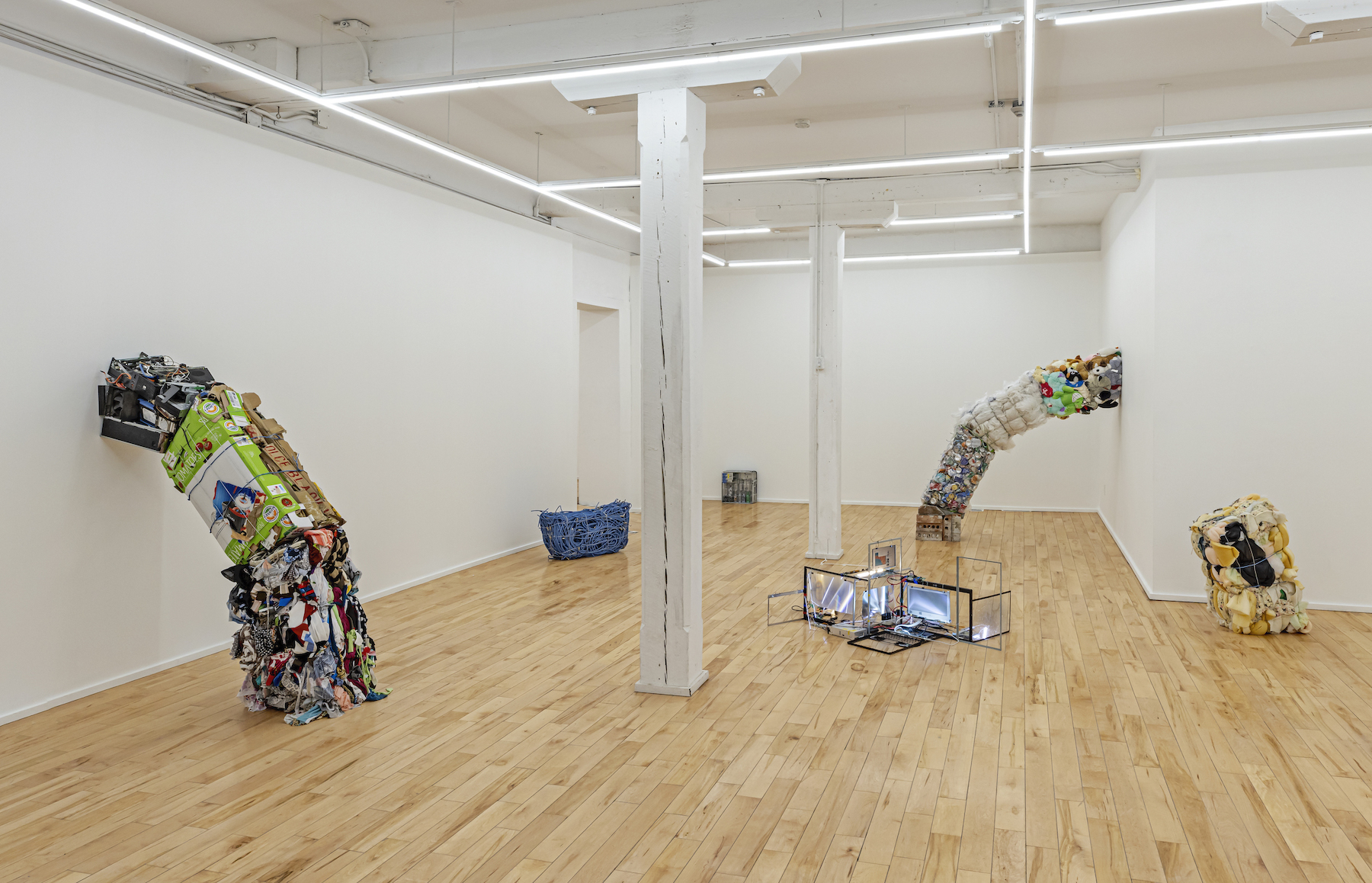
Every Beloved Object explores oblique connections between recycling processes, monumental architecture, undiscovered ruins, and the intrinsic and necessary “strangeness with which we encounter the fact that we are responsible for a mass extinction event” (All Art is Ecological, Timothy Morton).
In these works, I displace the energy cost and invisible labour forming the backbone of recycling processes as central techniques in my studio practice. An autodidactic process is formed: waste is gathered from local sites and sourced from commercial compactors, hand-cleaned and disassembled, studied and sorted, compressed and bailed.
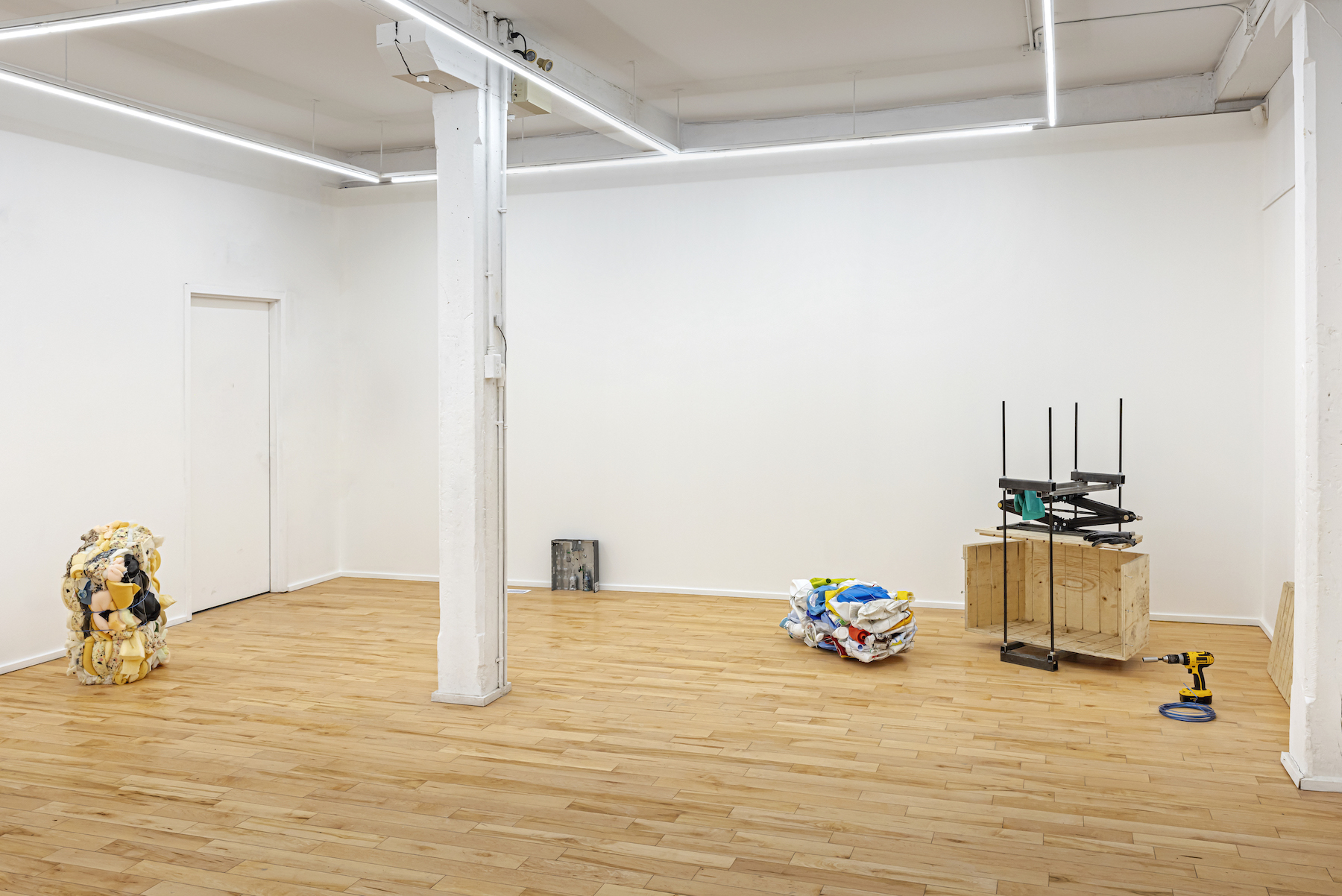
The act of material compression, whether geological or human-directed, increases its density and value, whether in terms of practical use or symbolic value. The formed architectures are equally plausible as a distant apocalyptic future reaching for the past, or a past ruin extending into the future. “Progressus ad originem, regressus ad futurum... every beloved object is the center of a Garden of Paradise” (Too Loud A Solitude, Boromil Harabal).
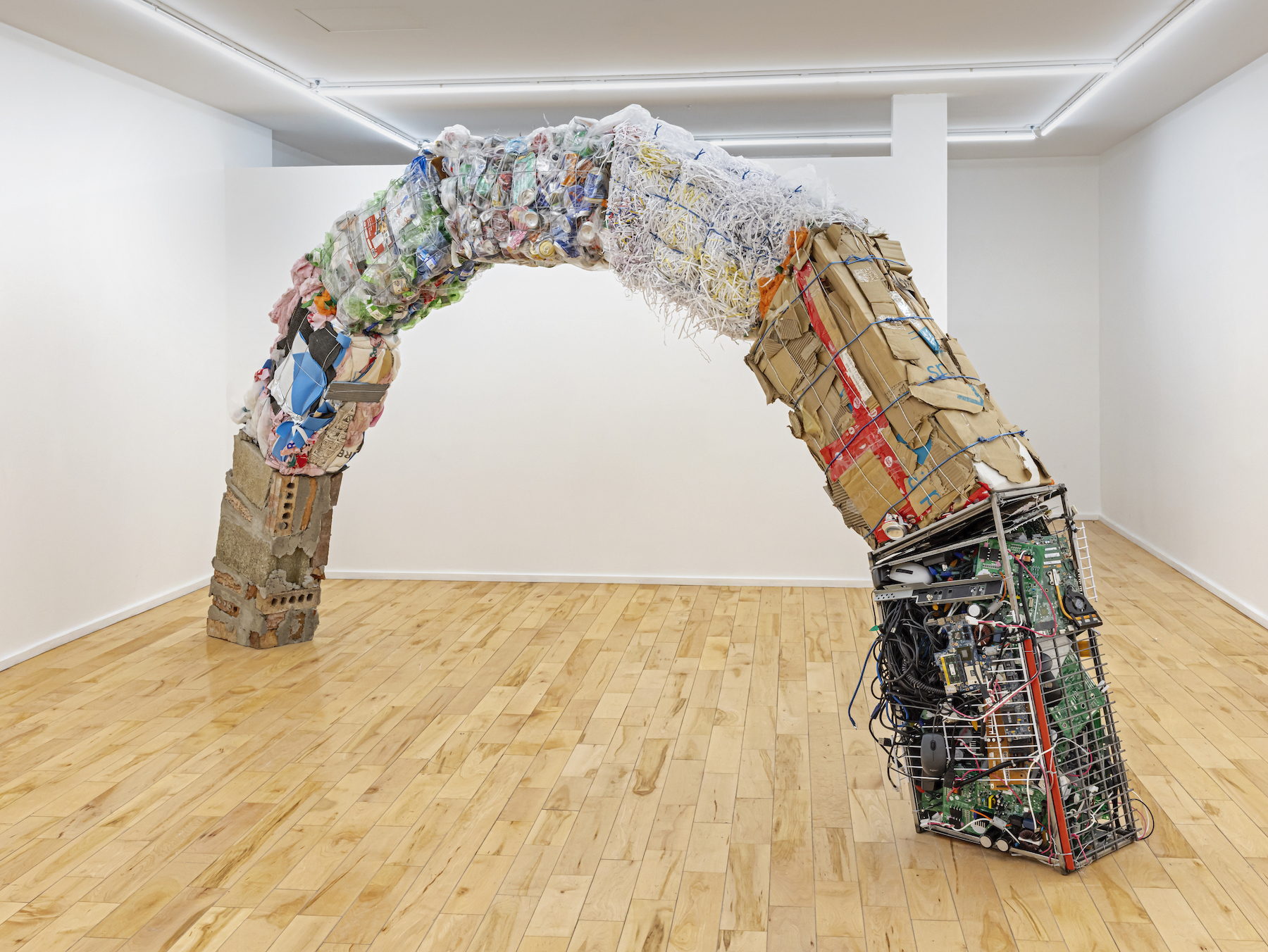
Grand Arch (Solid Waste). 2023. 14' x 2' x 7'. E-waste, post-consumer cardboard, paper waste, post-consumer aluminum cans, post-consumer PET plastic, found construction waste, found bricks, cement, metal, utility wire.
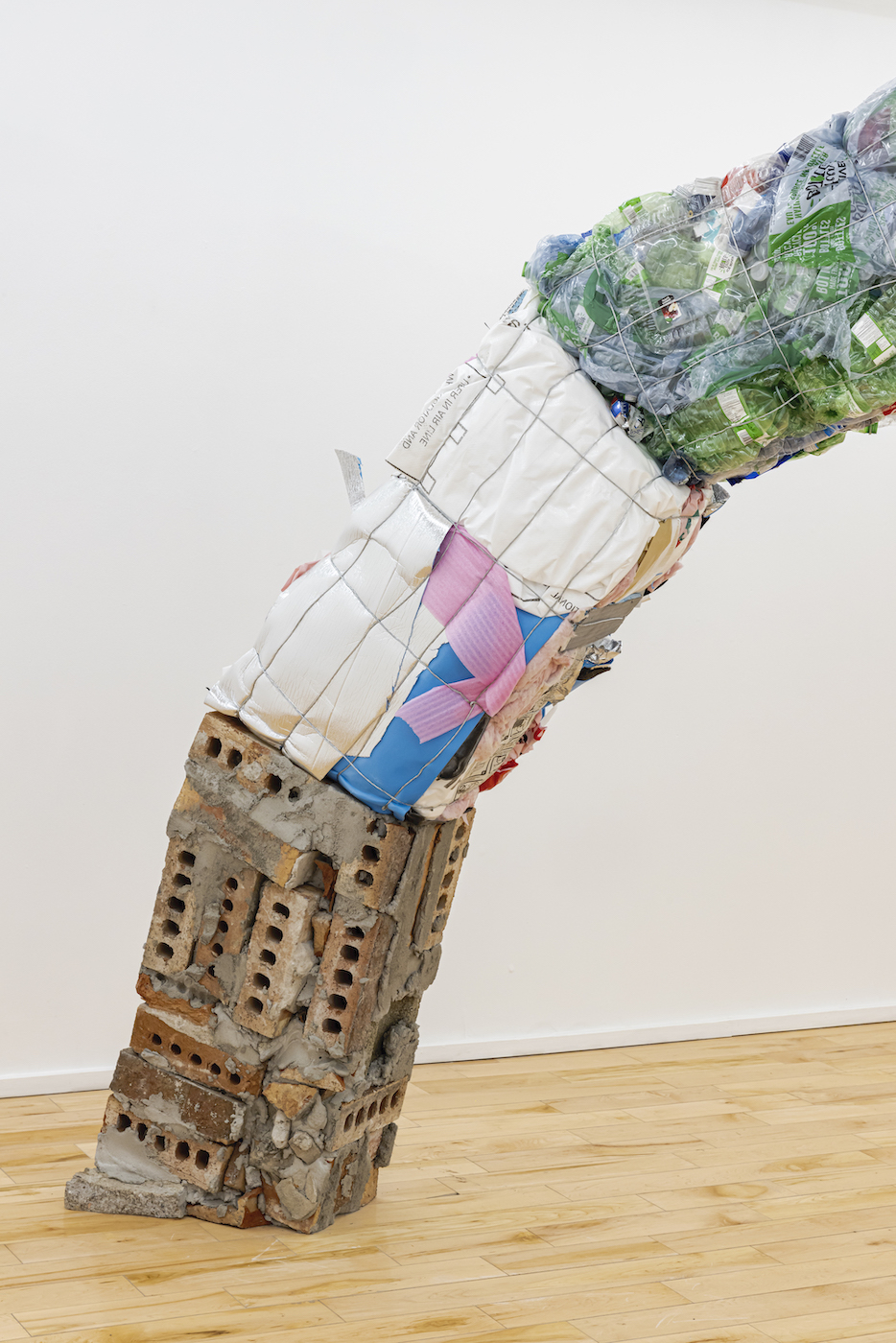
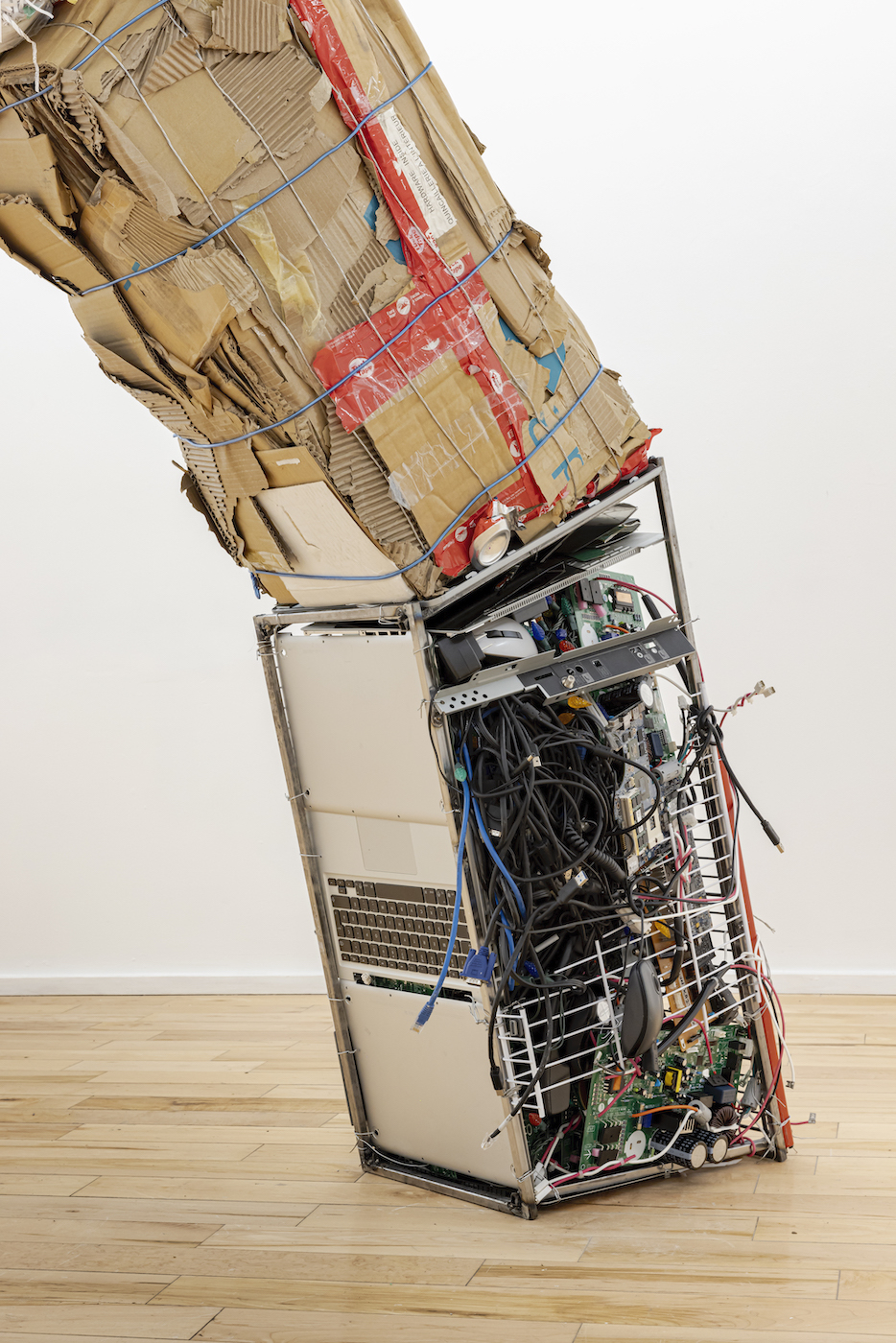
An arch-bridge is an ancient architectural design in which tension loads are distributed downward, outward, and inward as compression forces. Each piece exerts forces on its neighbour while also resisting the same forces, creating an architectural balance that does not require mortar, glue, or anchoring connections between pieces. As a structural design, it remains unparalleled in its ability to hold architectural loads, with many arch bridges still in use two thousand years after they were originally built.
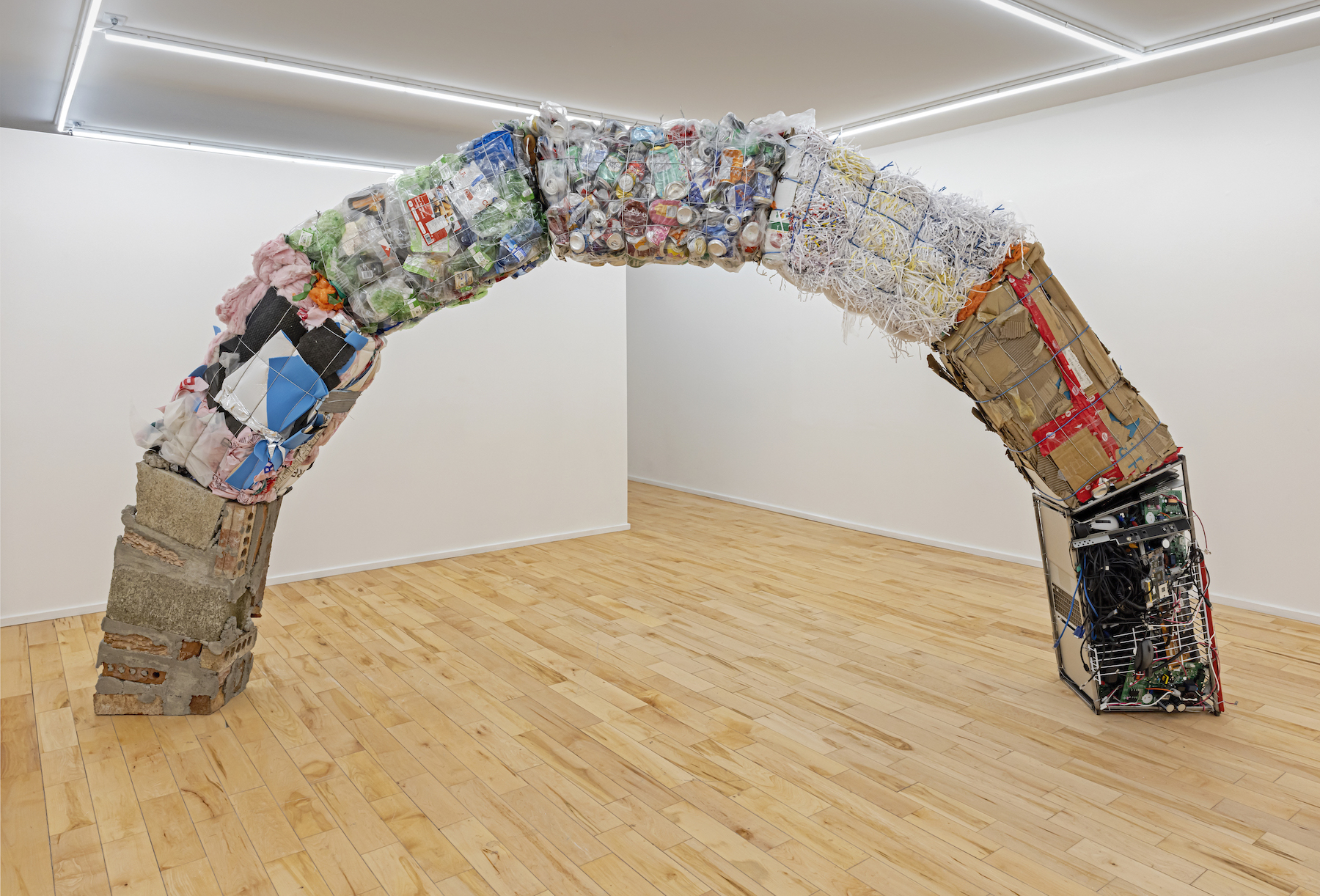
Grand Arch (Solid Waste) re-creates this design entirely through the use of compacted post-consumer waste. Materials were sourced in the vicinity of the artists’ studio, as well as recycling sorting facilities specializing in e-waste, PET and HDPE plastics, and aluminum cans. The sourced and found materials are then cleaned by hand, prepared, disassembled, compacted and bailed.

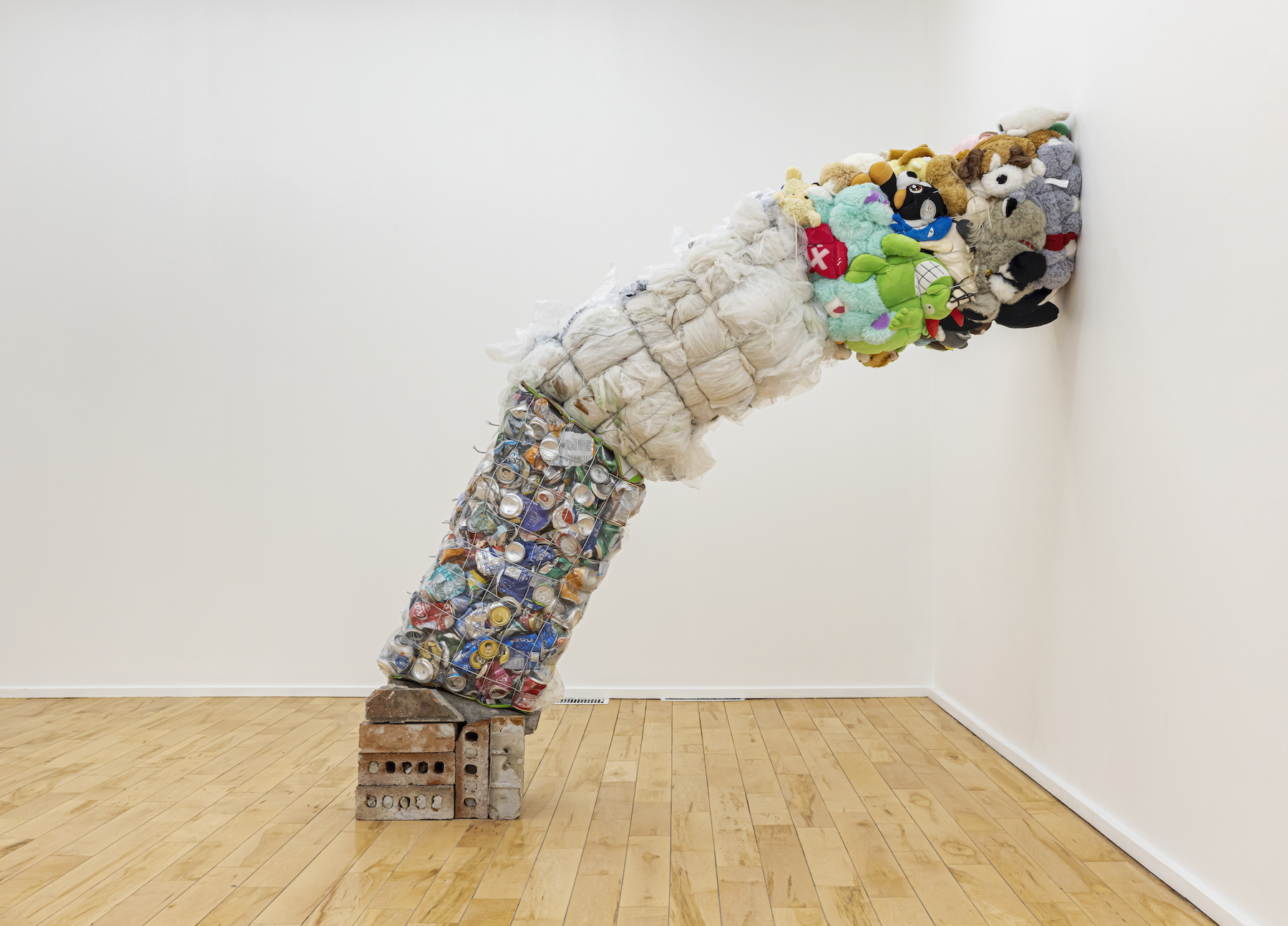
Partial Arch 1 (Bridge to Nowhere). 2023. 6’ x 2’ x 6’.Discarded children’s toys and plushies, plastic wrap and packing materials, aluminum cans, found bricks, cement, utility wire.
A variation on Grand Arch (Solid Waste), two partial arches extend towards the gallery walls. The arches suggest a continuation beyond the gallery walls, as if they preceded the construction of the gallery space, which has plausibly built around their partial ruins.
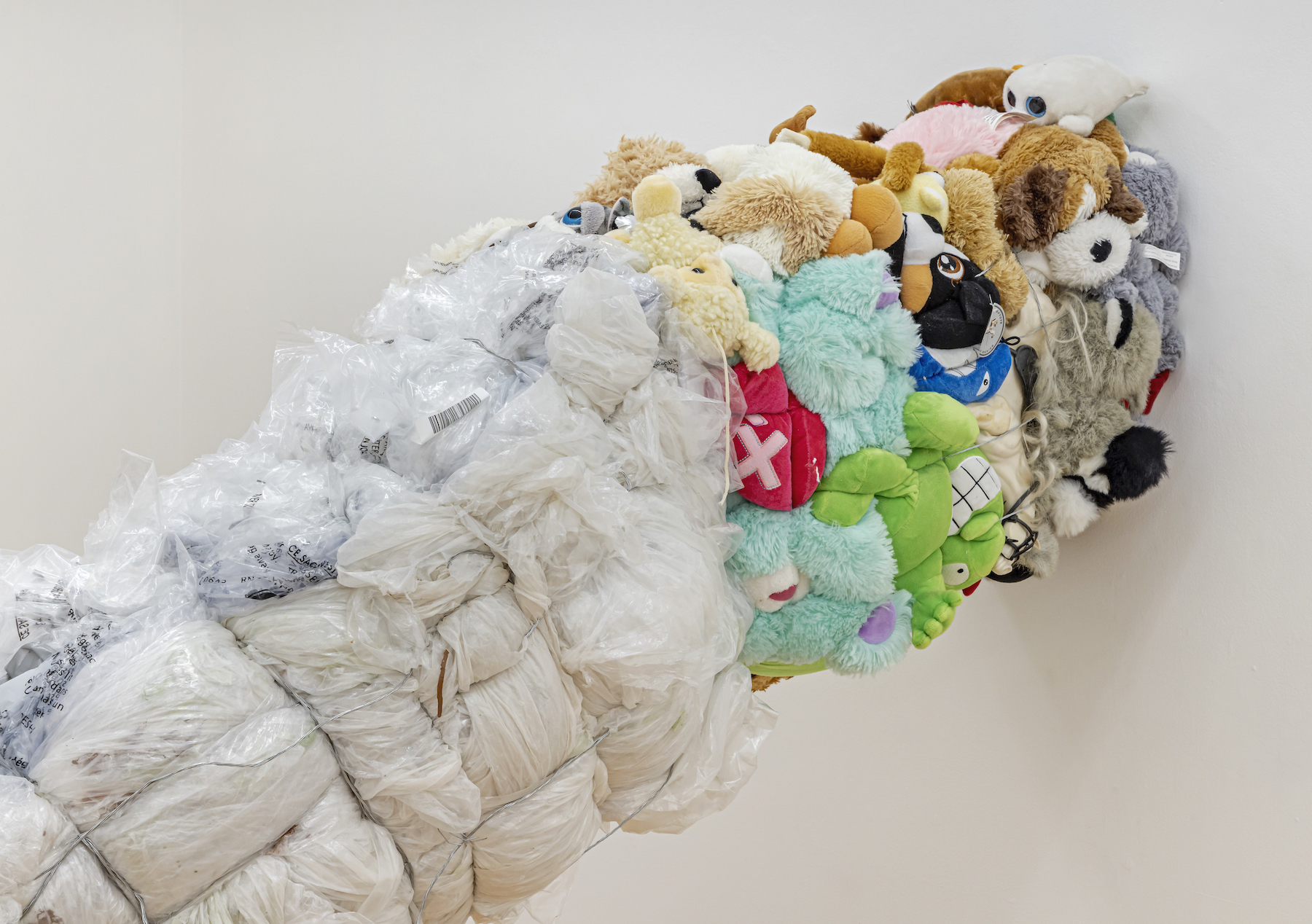
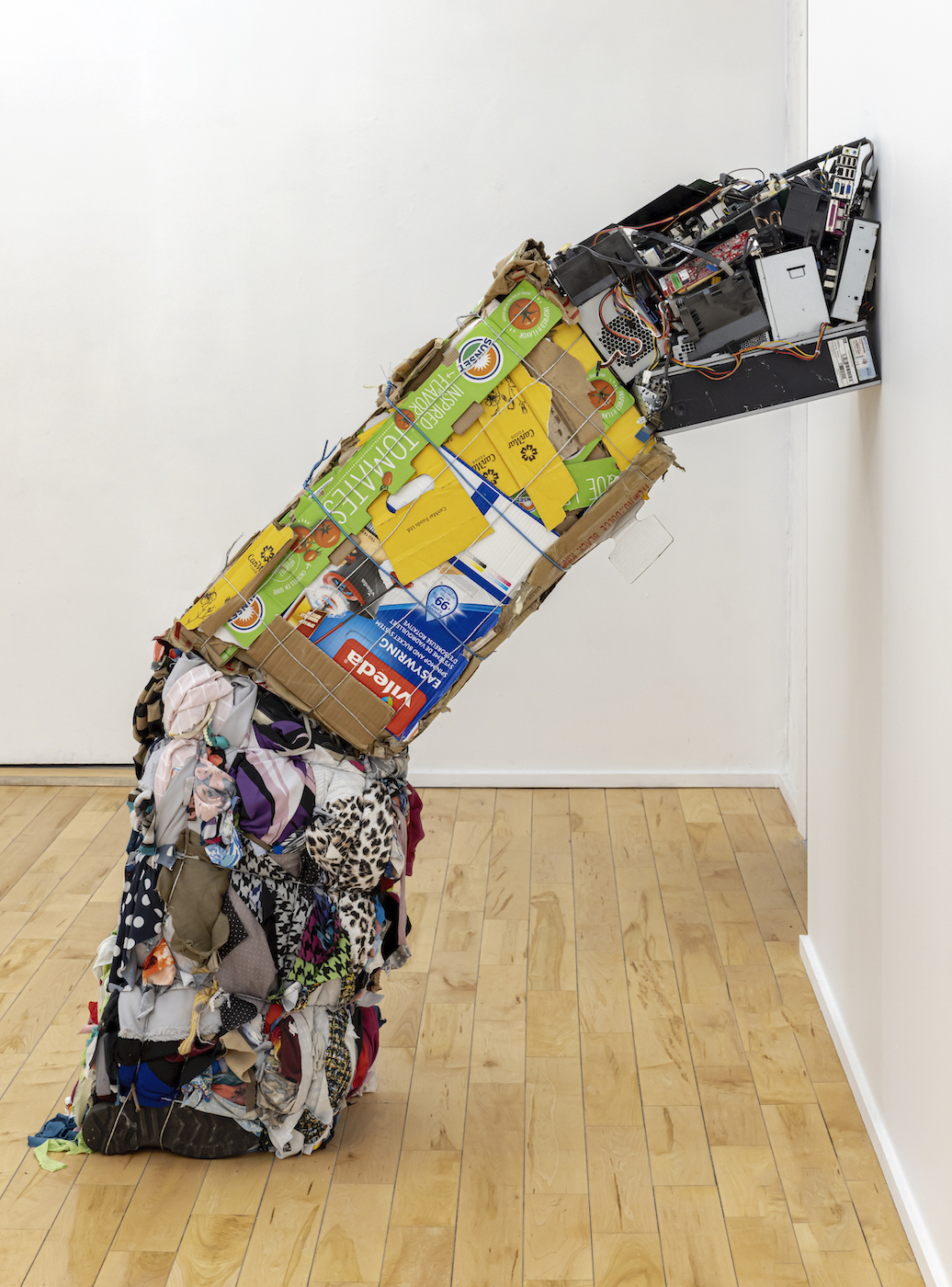
Partial Arch 2 (Bridge to Nowhere). 2023. 4’ x 2’ x 5’.Discarded fabric cuttings, shoes, cardboard, electronic waste.
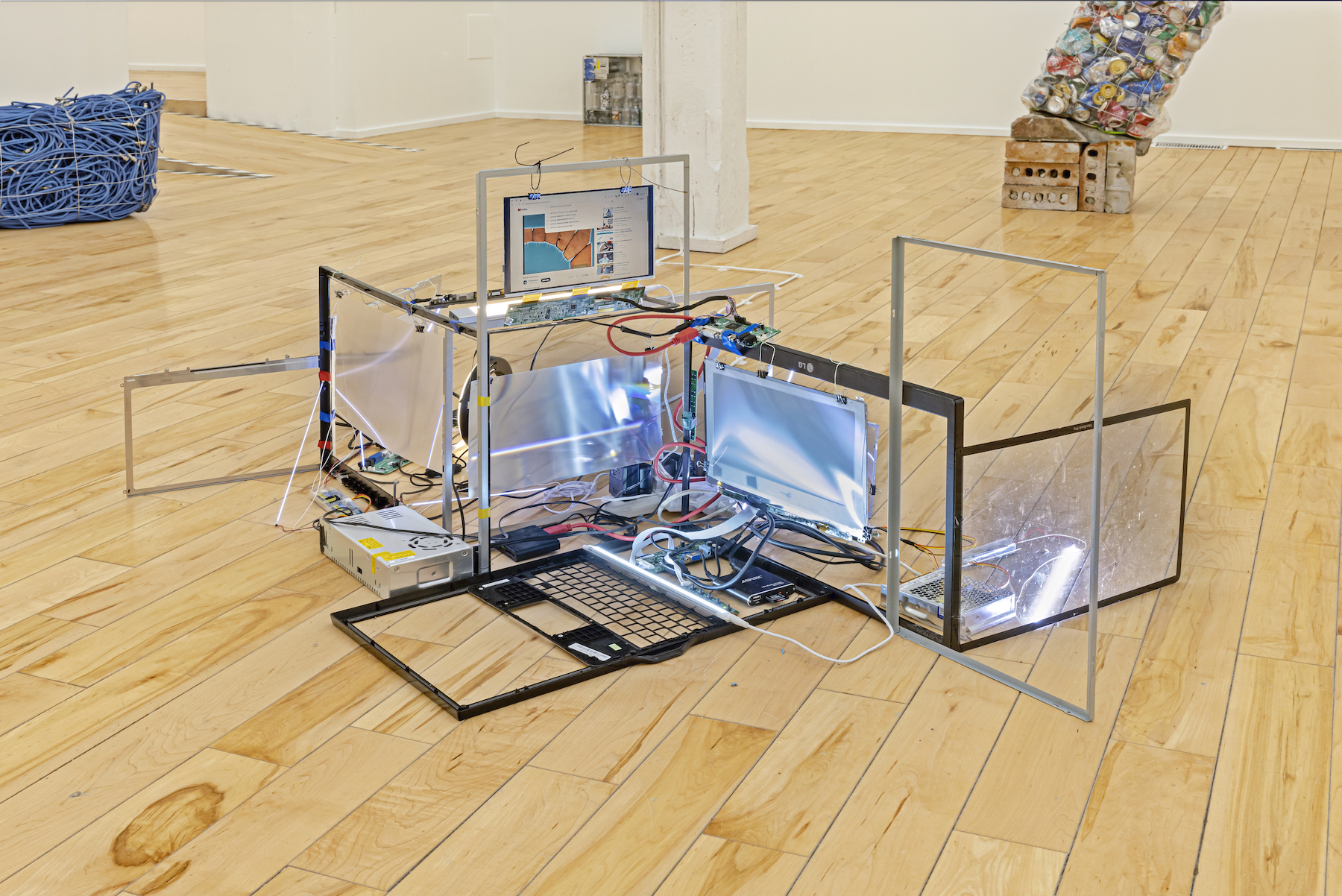
Invisible Labour. 2023. 4’ x 3’ x 2’. Deconstructed laptops (LCD, mini fluorescent CCFL bulbs, prismatic filters, metal, plastic), electronics, LED’s, electrical tape, 3-channel video.
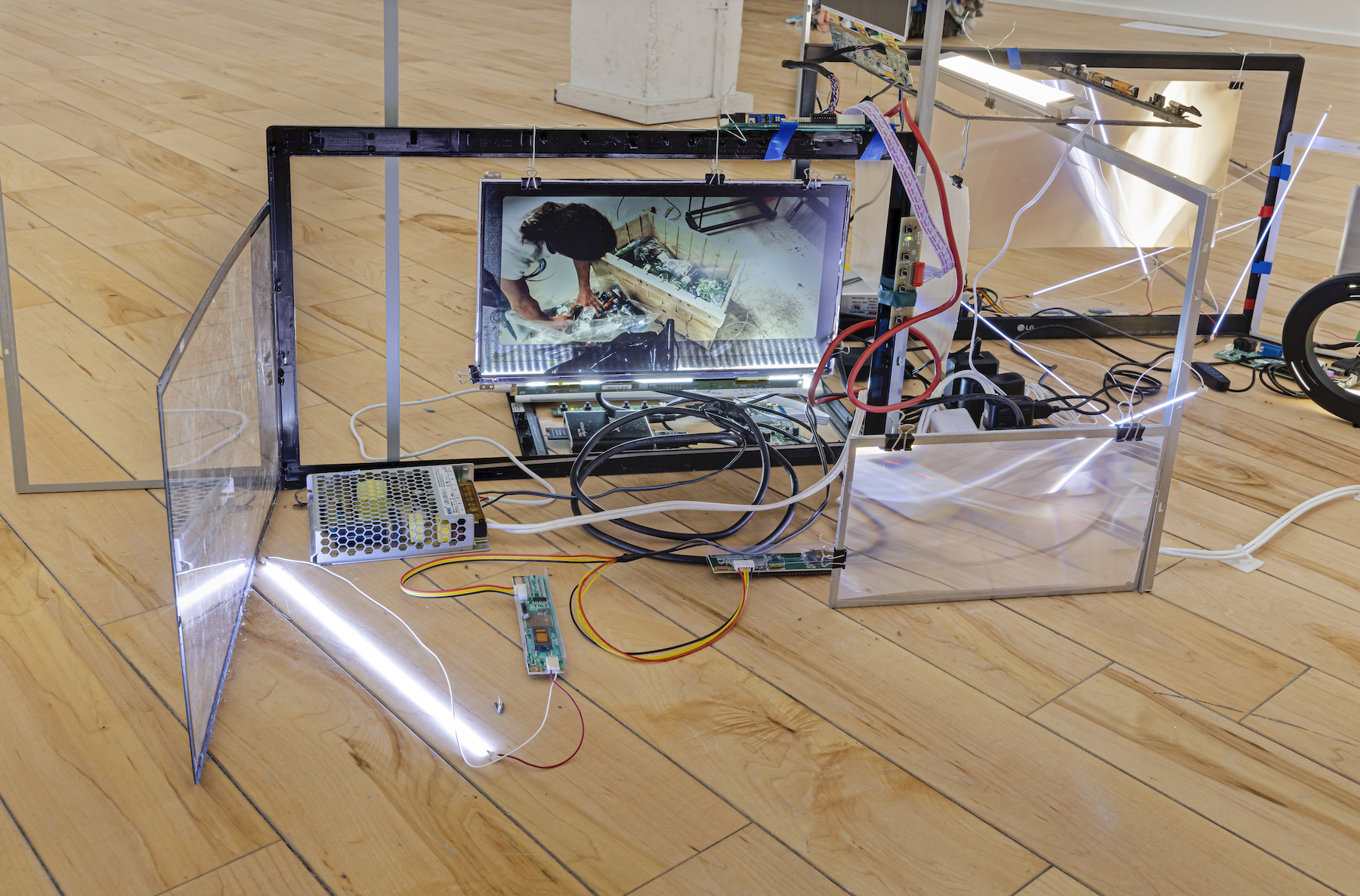
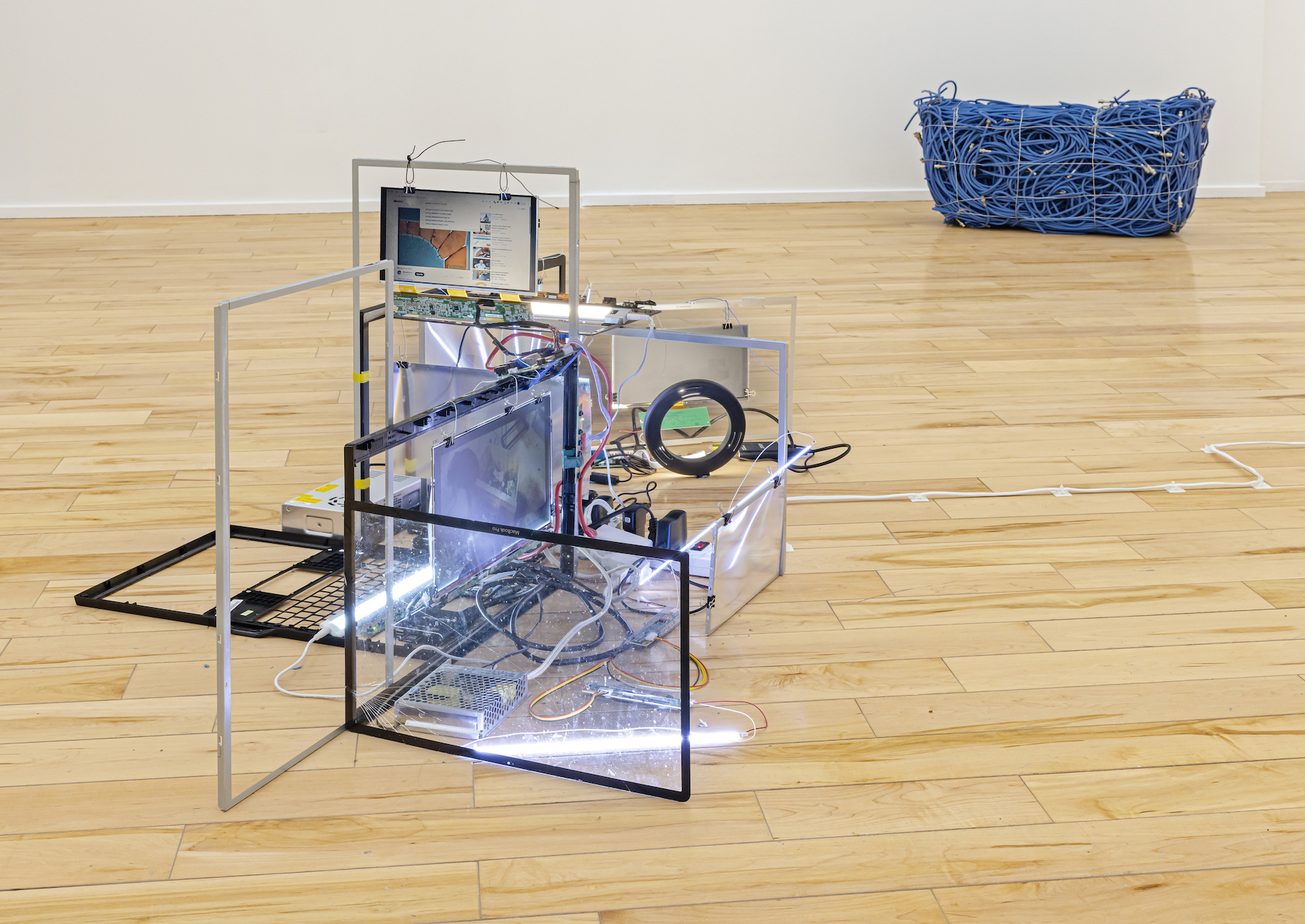
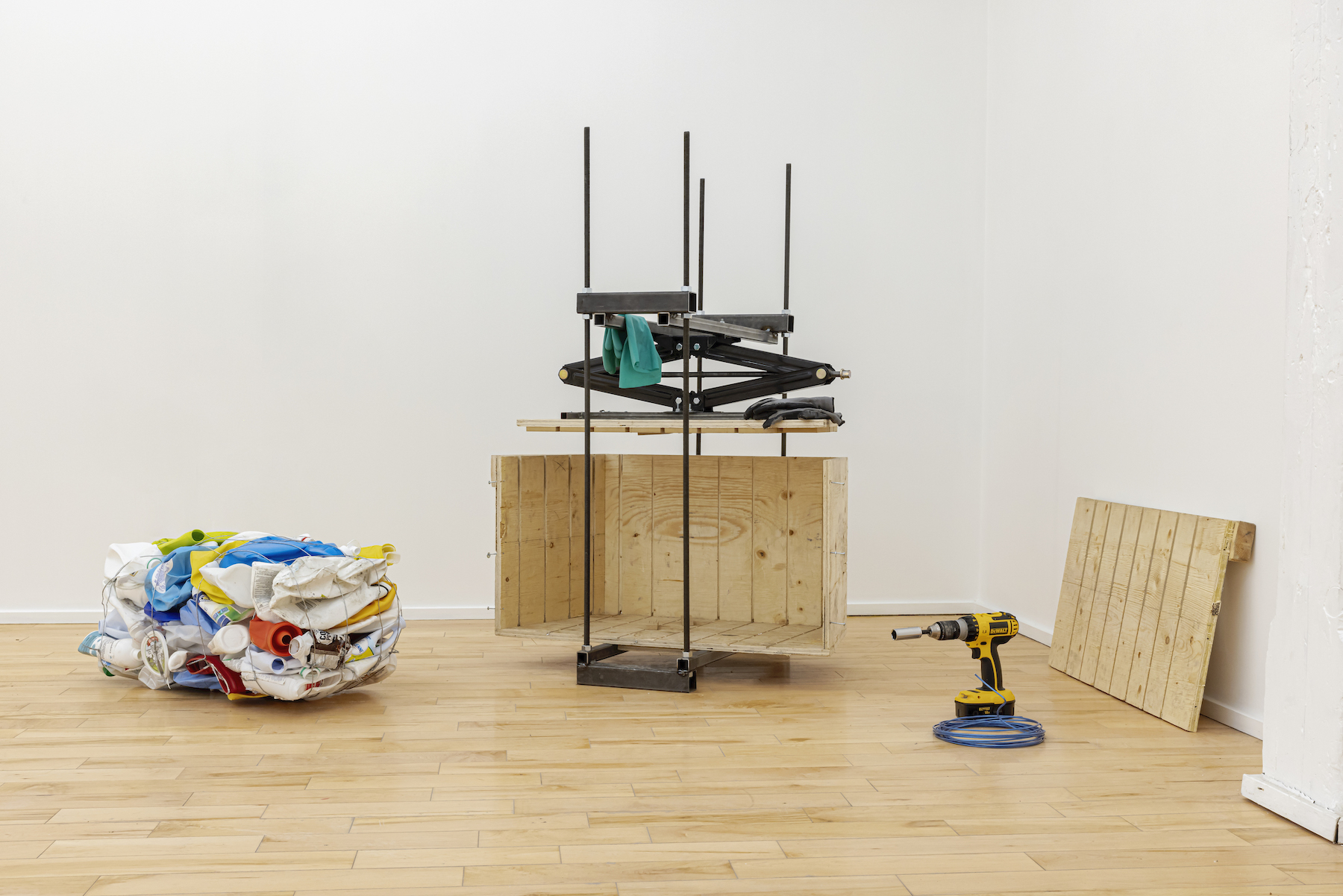
Compactor. 2023. 5’ x’ 5’ x 6’. Metal, wood, RV jack, drill, utility wire, HDPE plastics.
A custom-built DIY compactor - designed and built by the artist, and used to produce the compacted blocks - is displayed alongside several leftover blocks and other small works.
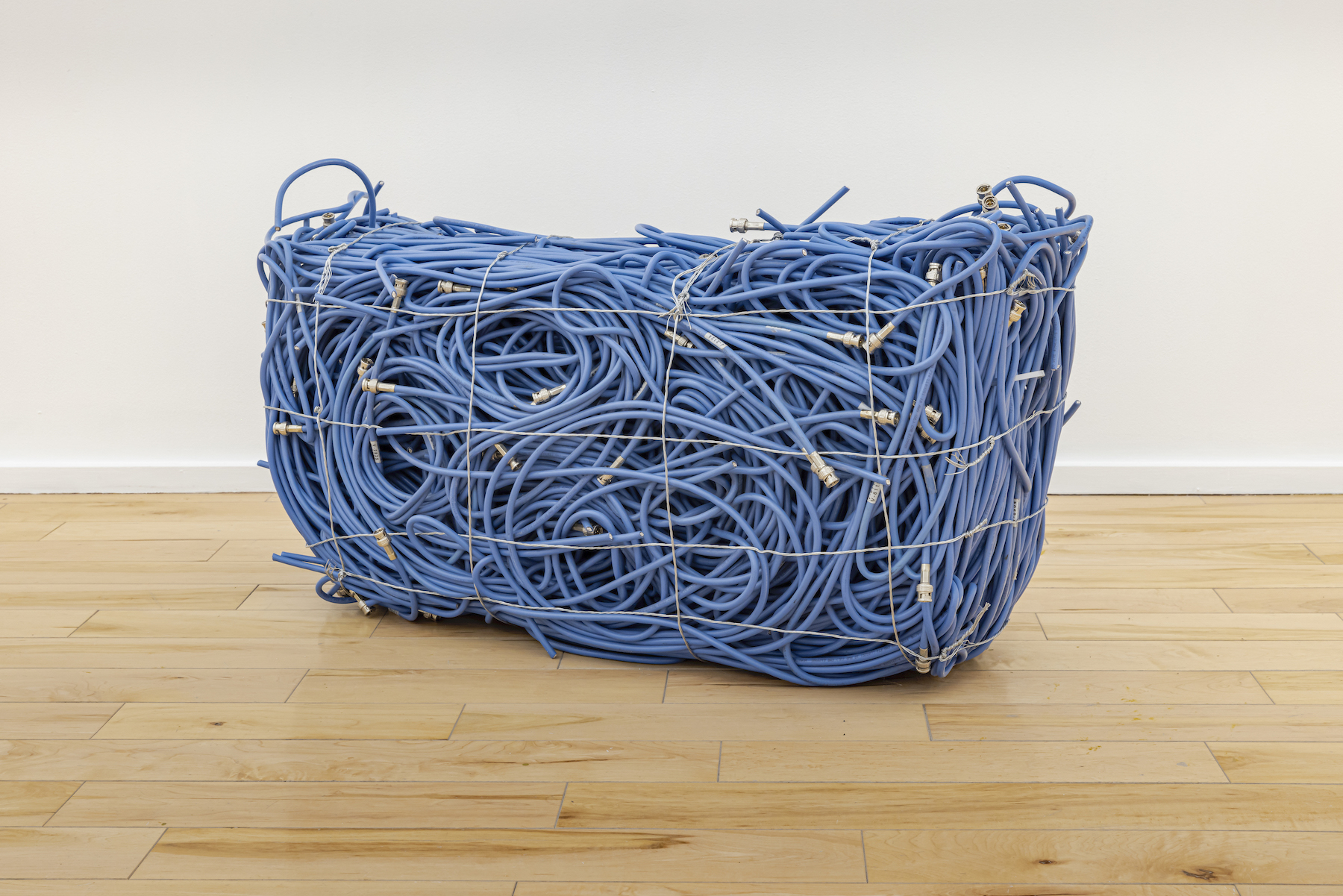
Leftover block 1. 2023. 3’ x 1’ x 2’. Post-consumer coaxial cable.
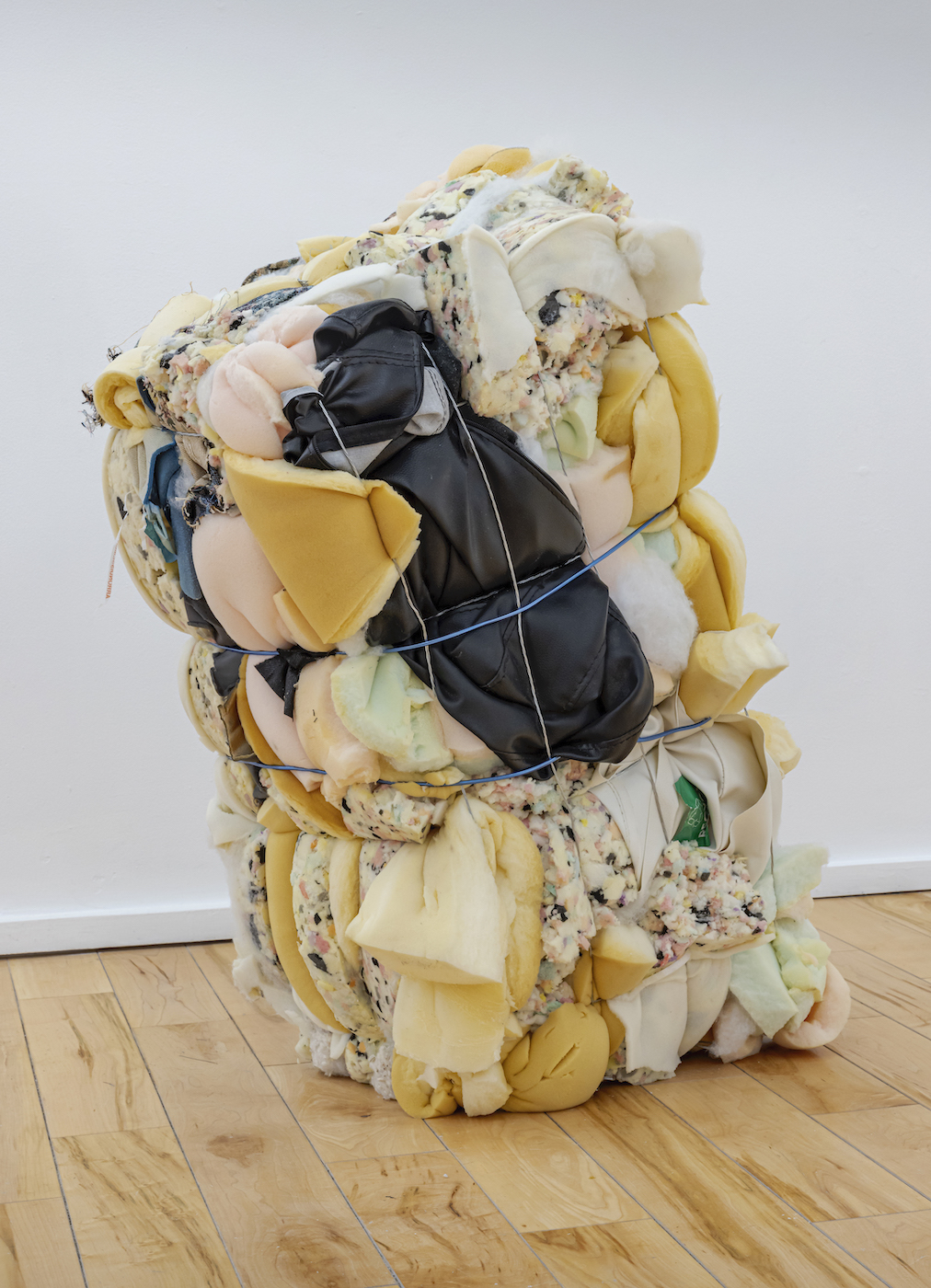
Leftover block 2. 2023. 3’ x 1’ x 2’. Foam and fabric (discarded furniture).
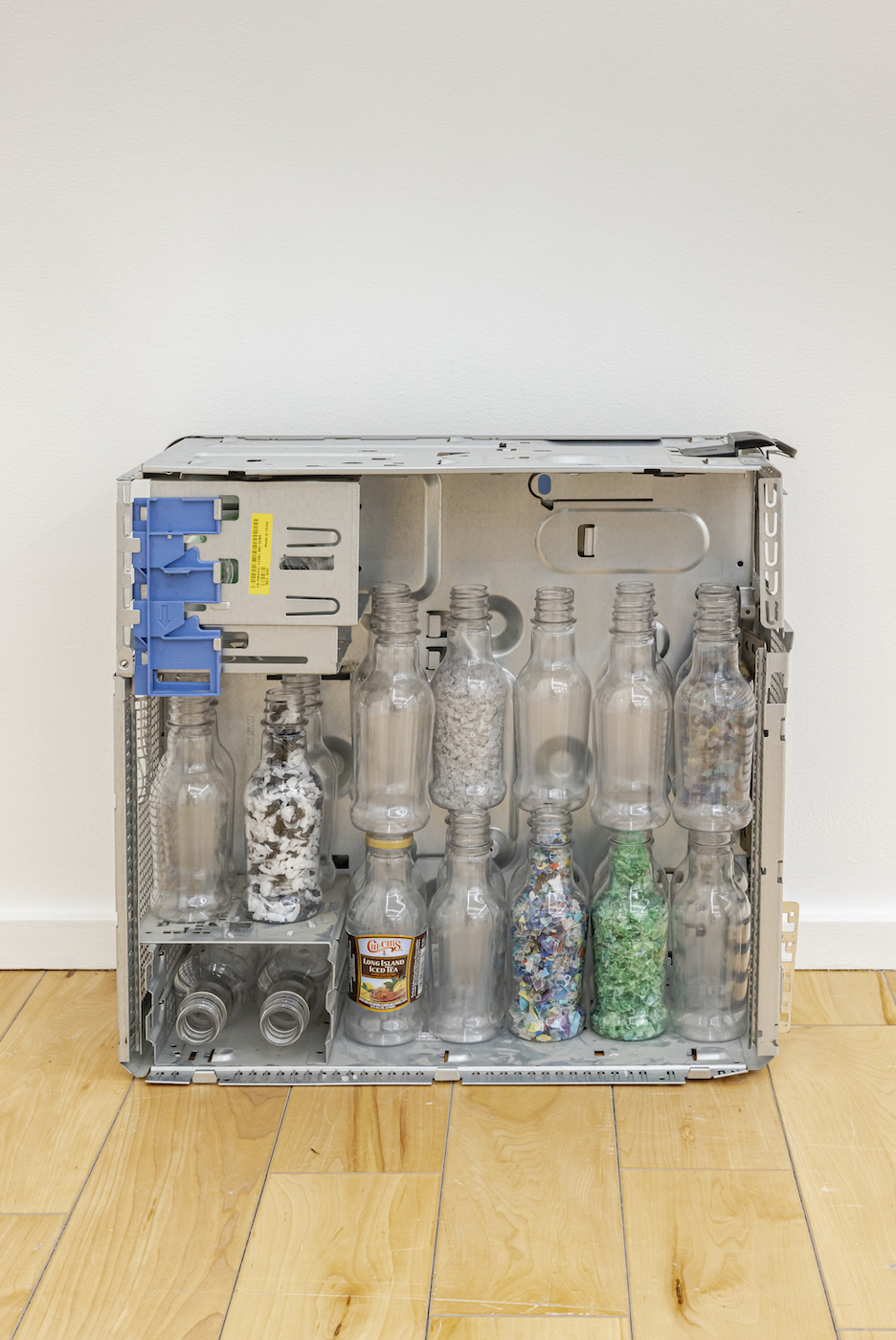
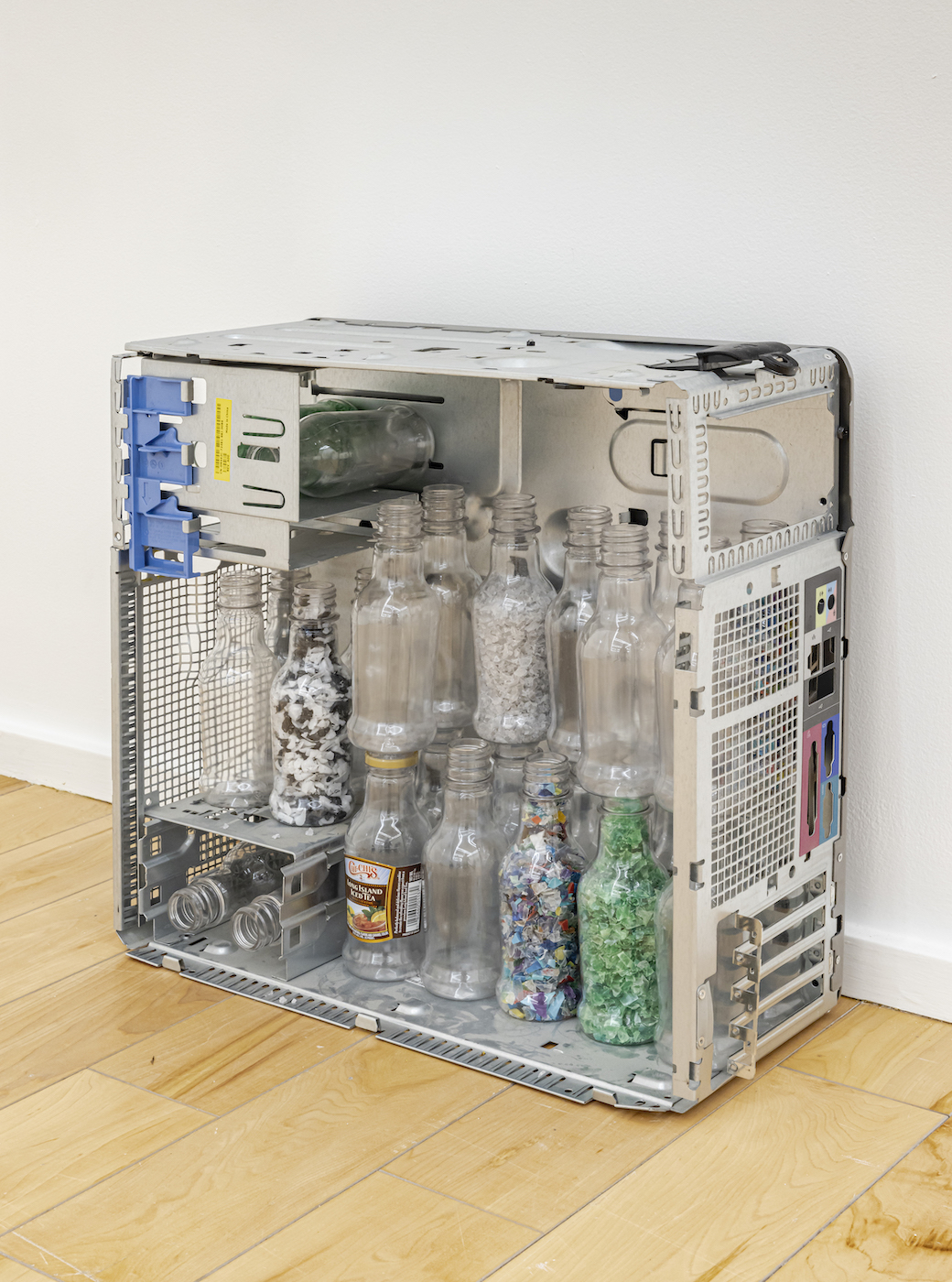
Inventory 1. 2023. 20” x 8” x 20”. Discarded computer frame, metal, plastic, post-consumer bottles (Chi-Chi’s Long Island Iced Tea), colour coded PET plastic flakes.
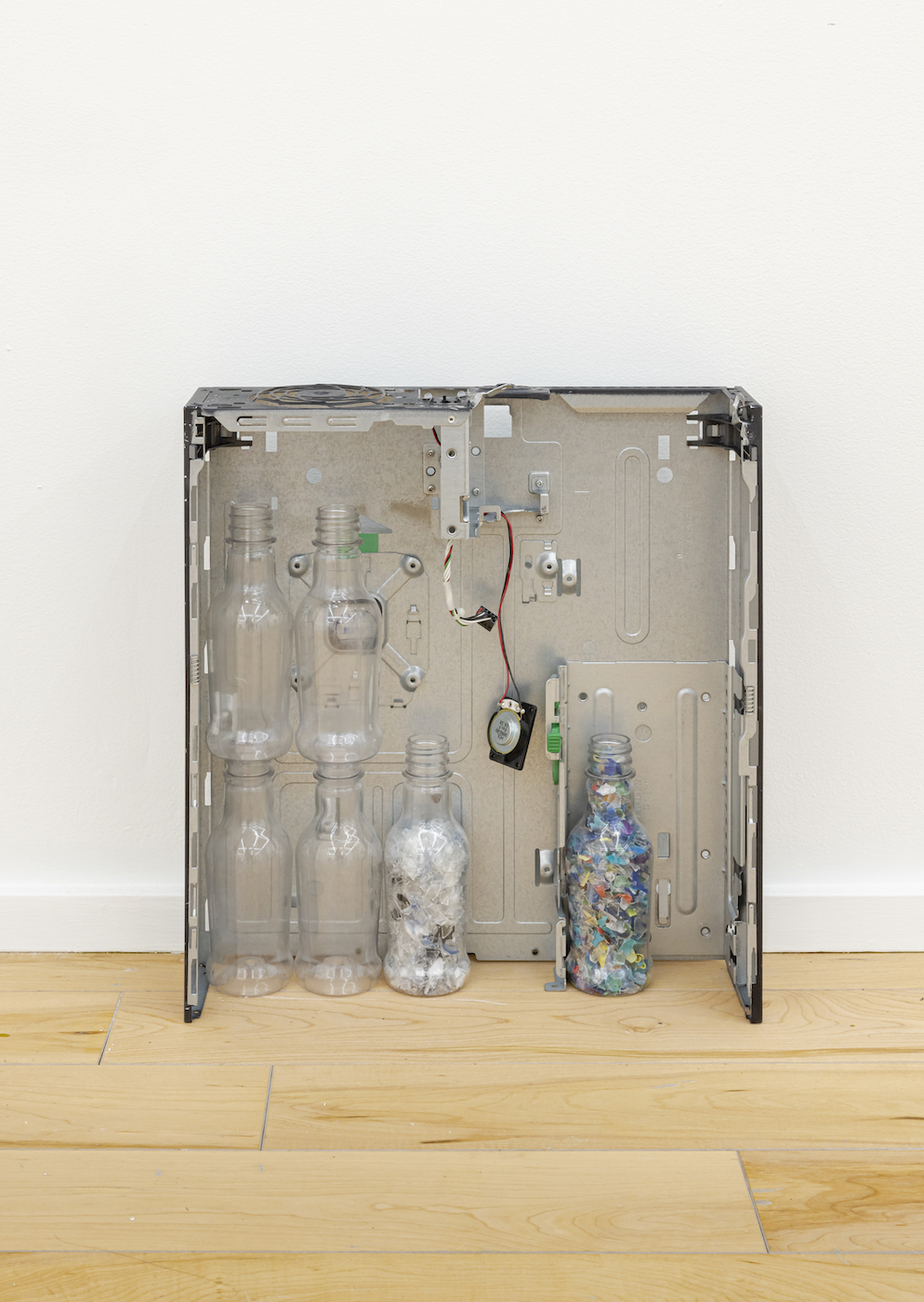
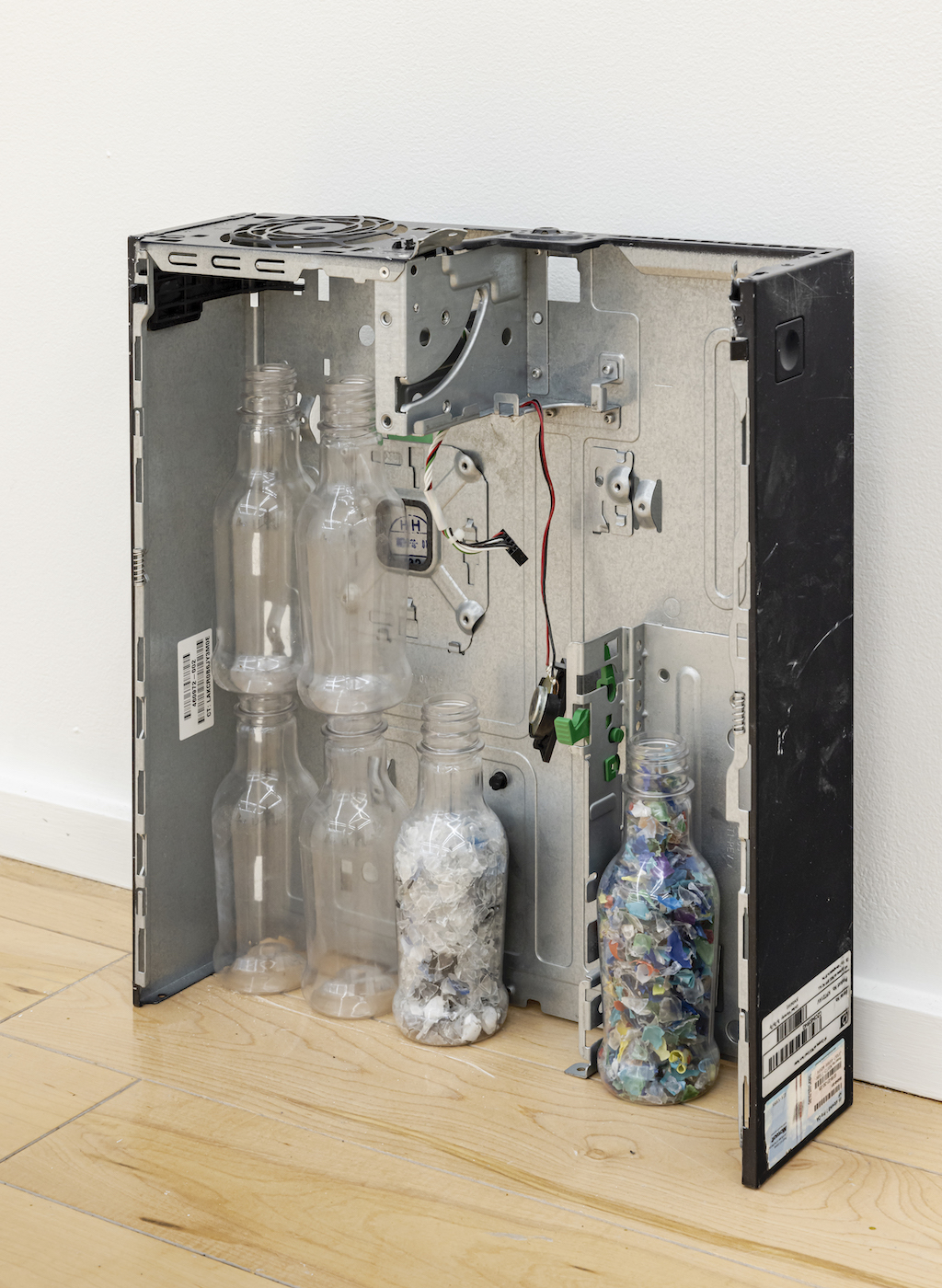
Inventory 2. 2023. 18” x 6” x 18”. Discarded computer frame, metal, plastic, post-consumer bottles (Chi-Chi’s Long Island Iced Tea), colour coded PET plastic flakes.
Photos by Toni Hafkenscheid.